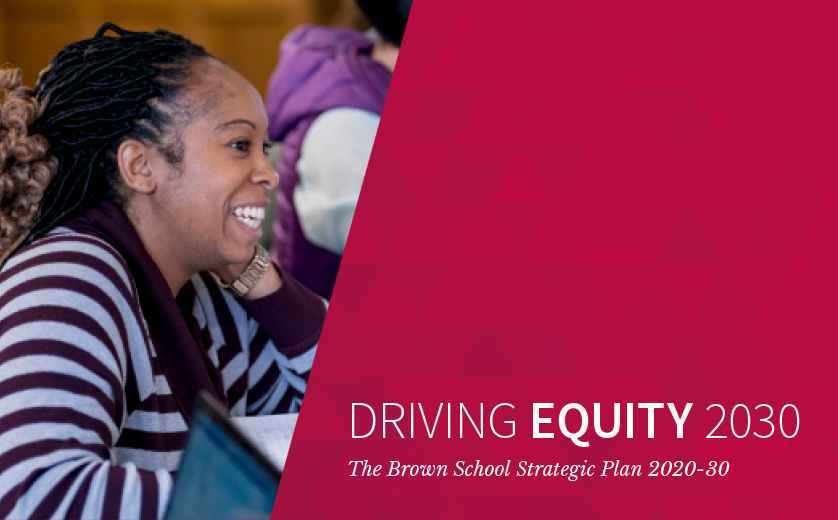Strategic Priorities
Community-Driven Science
Innovative solutions to social, health and structural challenges that are developed in academic isolation too often fail in real-world settings. The constraints of environments characterized by scarce resources—including inadequate funding, limited workforce capacity and lack of “buy-in” from funders and policymakers, which are all needed for sustainability—may not be taken into account.
Rigorous collaborative research methods can be applied to advance new knowledge and the social good simultaneously. Given the Brown School’s commitment to mutually beneficial partnerships locally, nationally and globally, elevating community-driven scientific methods and studies as an area of distinction is an important opportunity for leadership across our fields.
Progress Reports
Progress Report 2022
Given the Brown School’s commitment to mutually beneficial partnerships locally, nationally, and globally, elevating community-driven scientific methods and studies as an area of distinction is an important opportunity for leadership across its fields. The committee is working on providing internal infrastructure to support community-driven science as a protected place for faculty, staff, and community to hold space with the purpose of constructing new initiatives around community-driven science.
Ideally, the committee would like to incentivize collaboration with community citizen scientists through grants and awards, increase the communication and dissemination of the impact of the Brown School’s collaborative scientific efforts, and advance the field of community-driven science through transdisciplinary curriculum development, instruction, and practice.
Goals and Objectives
Goal 1: Leverage and grow the community-involved science resources of the Brown School to advance equity and eliminate disparities in local, national, or global regions with a focus on marginalized or low-resource communities.
Objectives:
- Provide internal infrastructure to support community driven science as a protected place for faculty, staff, community to hold space, to build things, i.e., https://www.cscce.org/
- Make investments in faculty/staff doing community collaborative science to ensure the advancement of CDS.
Goal 2: Align school structures to value community-centeredness and community impact.
Objectives:
- Develop a set of metrics based on tenants of CDS to inform processes related to hiring, promotion, and tenure (Recognize and Reward).
Goal 3: Advance a model of community driven science to make equitable population level impact, advance scholarship, and our reputation in partnership with local and global communities.
Objectives:
- Implementation of 1-2 population level studies in the St. Louis region.
- Advance the field of community driven science through trans-disciplinary curricula development, instruction, and practice.
- Increase the communication and dissemination of the impact of our collaborative scientific efforts.
- Affirm and support the growth of community leadership.
Goal 4: Undertake science and community collaborations in partnership with local, state, national, and global communities to impact policy.
Objectives:
- Assess internal and external collaborations that drive local, state, national and global policy

“We must value the perspectives and lived experiences of people who reside in the local community if we expect to make any sort of impact. We need the community’s help to identify and foster assets that are embedded in their environment.”
–DARRELL HUDSON, ASSOCIATE PROFESSOR